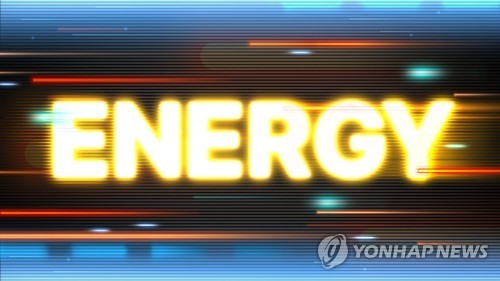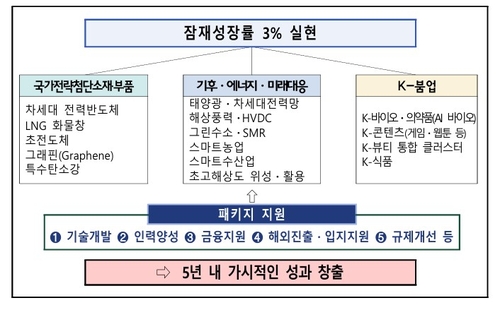(Sejong=Yonhap Infomax) Jun Hyung Park = The South Korean government has unveiled a 'super innovation' strategy to overhaul the nation's energy structure, focusing on future core sectors such as solar power, intelligent power grids, and offshore wind energy.

The plan aims to secure a first-mover advantage by commercializing ultra-high-efficiency tandem solar cells ahead of global competitors, while building next-generation intelligent power grids that integrate and manage renewable energy and energy storage systems (ESS).
Deputy Prime Minister and Minister of Economy and Finance Koo Yun-cheol presided over the 'Economic Ministers' Meeting and Growth Strategy Task Force (TF)' on the 26th, announcing the 'Super Innovation Economy: 15 Leading Projects Implementation Plan.'
This plan refines the climate, energy, and future response framework outlined in the new administration's economic growth strategy last August, presenting detailed roadmaps for six major projects: next-generation solar, Korean-style next-generation power grids, ultra-large offshore wind, high-voltage direct current transmission (HVDC), green hydrogen, and small modular reactors (SMR).
The government emphasized, "The next five years represent the final golden time," pledging to mobilize all available resources—including technology development, workforce training, financial support, and regulatory reform—to back these super innovation projects.

In the solar sector, the government will accelerate the early commercialization of 'ultra-high-efficiency tandem cells.' By 2028, South Korea aims to develop core technologies for tandem solar cells and modules, targeting world-first commercialization. The goal is to achieve cell efficiency of 35% and module efficiency of 28% by 2030.
To this end, a total budget of 33.6 billion won ($25.8 million) will be allocated next year for large-scale R&D projects, alongside support for workforce training and the establishment of standards and certification systems.
The government stated, "The existing solar cell sector faces price competitiveness challenges due to monopolization by certain countries and oversupply. Restructuring the ecosystem through next-generation solar cell technologies is essential." It added, "We will secure technological leadership and early commercialization in next-generation solar cells, including ultra-high-efficiency tandem cells and building-integrated photovoltaics."
The government will also accelerate the construction of a 'Korean-style next-generation power grid' to address grid instability caused by the rapid increase in renewables. This next-generation grid will optimize power production, storage, and consumption by controlling various distributed resources—such as renewables and ESS—using AI technology.
By 2030, approximately 340MW of ESS will be installed across 85 lines centered in Jeonnam, with microgrid (MG) demonstrations at industrial complexes, universities, military bases, and airports.
In offshore wind, the government will pursue localization of 20MW+ ultra-large offshore wind turbines to enhance competitiveness in turbine technology, an area where South Korea has lagged behind leading countries. Next year, 69.8 billion won ($53.6 million) will be invested in wind power R&D, with new programs to train and upskill talent across the entire offshore wind supply chain.
The HVDC project will also be launched to stably transmit large-scale renewable energy. Public-private partnerships will advance core equipment such as transformers, valves, and controllers, with a 2GW 'energy expressway' spanning 220km from Saemangeum to Seohwaseong scheduled for completion in 2030.
In green hydrogen, the government will develop large-scale water electrolysis systems to match advanced economies and secure gigawatt-level production capacity, while launching demonstration projects for green hydrogen production and storage in renewable-rich regions.
For nuclear power, both light-water i-SMRs and next-generation non-light-water SMRs will be developed in parallel, with plans for overseas commercialization by 2030.
The government stated, "We will continuously update detailed implementation plans for each project and identify budget items for project execution by 2027." It added, "Progress will be reviewed at vice-ministerial meetings, and support measures will be prepared accordingly."
jhpark6@yna.co.kr
(End)
Copyright © Yonhap Infomax Unauthorized reproduction and redistribution prohibited.

